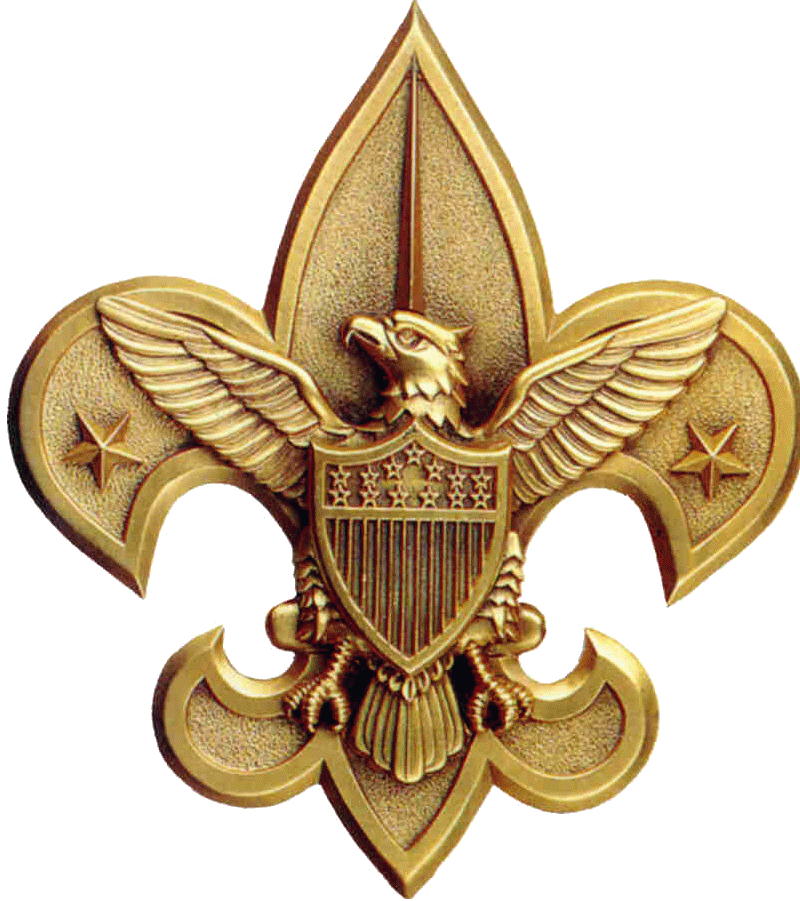ALAMEDA, CA
SCOUTING AMERICA TROOP 73

CAMPING CHECKLIST


These items are mandatory:
-
Signed Medical Form A/B on file or bring as Permission Slip (you can not attend any outing without this on file)
-
Bag lunch (we will not be able to stop so you can buy food)
-
External or internal frame Backpack (for new Scouts, a duffle bag will work if we are car camping and not backpacking)
-
Waterproof pack cover or 33 gal. size garbage bag
-
Extra 33 Gal Size Garbage Bag (for emergencies)
-
4 plastic grocery bags
-
Flashlight (test it, make sure bulb and batteries are working)
-
Socks (enough for two changes per day)
-
Rain Gear (always, always bring rain gear)
-
Sleeping Bag
-
Toilet kit (Soap, toothbrush, toothpaste, comb, toilet paper, hand sanitizer, moleskin, sunscreen, bug repellent)
-
Canteen or Water Bottle (Min. 1 quart of water, 2 quarts is better)
-
Sleeping clothes (pajamas, or sweatshirt and sweatpants)
-
Fleece or medium jacket
-
Mess Kit (unbreakable knife, fork, spoon, plate, bowl, cup)
-
Scout Handbook
-
Uniform, neckerchief, and Scout hat (always wear when traveling)
-
Medication (make sure to give to adult leader)
-
Note that "logo" shirts and sweatshirts are not allowed at BSA events, plan accordingly
These items are super nice to have
-
Boots
-
Personal First Aid Kit
-
Wrist Watch
-
Foam Sleeping Pad
-
Day pack
-
Note Pad and Pen
-
Matches
-
Compass
-
Emergency whistle
-
50 ft. of Paracord or light rope
These items are optional:
-
Ground cloth
-
Extra pair of light shoes or boots
-
Long underwear
-
Shower slippers
-
Sun glasses
-
Towel
-
Foot powder
-
Long sleeved shirts
-
Sweater
-
Mittens or gloves
-
Pocket knife
-
Fire starters
-
Camera
-
Swimsuit
-
Money for emergencies
Cold Weather Gear
Select the proper type and amount of clothing layers for the activity (do not show up at the green box dressed in all of your layers). Regulate your clothing according to your activity rate. This is the most effective way to ensure comfort. Pay attention to your body's signals. Don't wait until you are cold to put on more clothing. Act when you first begin to feel cooler. Remember "cotton kills"; avoid cotton clothing during cold weather outings. Your most important layer is the outer waterproof layer. Keep it intact. Should you remove it, and your insulation layers become wet, you will become painfully cold at the very least.
General:
-
Winter sleeping bag. Zero degree or warmer is best.
-
Second foam sleeping pad, if desired.
-
Smaller square of closed cell foam to sit and stand on (provides insulation).
Clothing Layers:
-
New High Performance Troop T-shirt and synthetic underwear (polyester or nylon is best but cotton may be ok here)
-
Long, thermal underwear top and bottoms (polypropylene or polyester)
-
Fleece pants and hooded jacket (synthetic fiber is usually polyester)
-
Nylon or polyester pants and shirt (at least a 50% if cotton blend, 100% synthetic is best), (BSA uniform shirt is 50% blend, and the new zip-off BSA pants are nylon)
-
Sweater or light jacket (wool or synthetic)
-
Waterproof pants and waterproof hooded jacket (rain gear / shell layer)
-
Wicking inner sock liners (nylon, polypropylene or polyester)
-
Insulating socks (thick wool or wool blend)
-
Footwear: waterproof boots, mukluks or snow boots large enough for thick socks
-
Head coverings (synthetic fiber ski mask or knit hat)
-
Waterproof insulated gloves or mittens. Multiple layers, if possible.
-
Sunglasses or ski goggles with UVA and UVB protection.
Sleeping Clothes
All of these items should be clean and dry. They are completely separate from the clothes you wear during the day. You do not want to crawl into your sleeping bag wearing the same dirty, wet clothes you wore during the day.
-
Winter hat
-
Glove liners or soft dry gloves
-
Dry undershirt
-
Fleece jacket or sweatshirt
-
Fleece pants + dry long underwear underneath (if desired for extra warmth)
-
Dry insulated socks (multiple layers, if desired)